People often ask me what inspires me, and my answer is always “anything.” I can be struck at any moment by any image, phrase or thought that will cause my mind to leap from one thing to the next in a realm of creative possibilities.
Recently, I received a package containing a very nice present. The present was duly considered, admired and appreciated for all of its wonderful attributes, but it was something in the packaging which sparked that inspiration node in my brain.
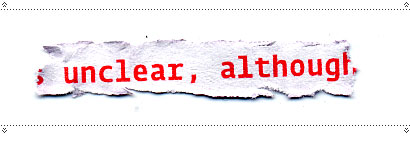
Shred.
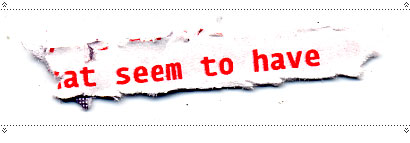
I, like many people, am a sucker for found texts. There are a number of websites devoted to found letters, notes and other scraps hosted and contributed to by people like myself who cannot resist the beckoning flutter of an abandoned note found on the street. When handwritten, it is personal and enigmatic, but when commercially printed it tends to lose its interest … that is, until it’s dismembered. What is it about words, ripped from their original context, that seem to have some personal message or meaning? They are unclear, although it seems that it is this very fact that makes them speak to us all the more.

It is well known that we are able to construct meaning from surprisingly incomplete words. Our ability to piece together what’s missing from the familiar forms of language is remarkable. We recognize part of the words or letterforms, and we anticipate the rest. There is always a slight feeling of triumph in having guessed at something uncertain, as though we recognize the extreme cleverness of the human brain to solve the visual puzzle.
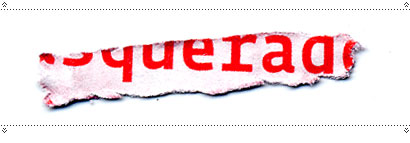
Some of these word scraps remind me of those famous typographic exercises by Robert Brownjohn—and now often used in classrooms—to express a word by a visual expression of the word. Words masquerade as themselves.

A single, ominous word has a myriad of tales to tell. My mind leaps to matters of the heart, darkness of thought and ill character rather than bottles of liquid or demarcation tape.
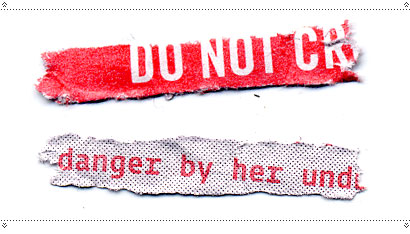
Do not cry? Do not cross? Do not create? Each possibility suggests a story around the potential text. The disembodied words become a voice speaking to us from a shadowy network, and like a throw of the I Ching, or the intonations of an oracle, we read meaning into the words as they relate to us at that moment. I view horoscopes, fortune cookies and other manufactured indications of my character or future with the same attention as these scraps: as randomly generated words which either pluck at my identity or are discarded as nonsense.
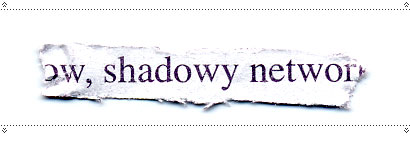
This idea of a voice in the words makes them seem almost like messages from the beyond. As I rifled through the box of shred, phrases and parts of words emerged as though the box itself was engaging in the Surrealist act of automatic writing. As anthropromorphic as this is—a box, after all, has neither consciousness nor a subconscious—someone made these writings, and someone shredded them. Coherent thought was processed through the selection and arrangement of words, printed and then shredded and delivered to me unprocessed and unarranged: what am I to make of this thought shrapnel?
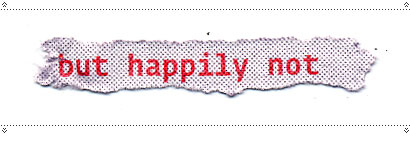
As it happened, I recognized the typography, and a casual enquiry lead me to the source—not only of the exact shredded material (which I have a copy of, but didn’t look at for fear of breaking the spell), but the shredder herself. I don’t own a shredding machine, I have never shredded, but I was curious whether these fragments could hold any interest for the person who made them. I emailed Fiona Drenttel, to ask. Fiona, by the way, is almost nine.

Fiona told me that, indeed, she had been very interested in the shred, and that she would take handfuls of it from a big garbage bag and look at the pieces one by one—on both sides—and set aside anything that seemed interesting. She then made poetic art constructions with them, in a kind of solitaire version of another Surrealist game, the exquisite corpse. I was surprised that someone so young would have this interest, but Fiona assured me that her fascination with found words extends much farther back. She said, “When I was two we were making collage pumpkins out of colored paper and I turned the paper over and saw writing on the other side and thought it was much more interesting.” Further, she said, “I think that things that you can actually read are better than things that you can not read.” Regarding the pumpkin with the added words, she described it as “more than just a pumpkin it is a WORDKIN.”

I wondered also how long Fiona’s interest in this medium might last. Surely, after some point, the novelty of shredding material must fade? But she told me she is far from being over shred, and added, with almost heroic emphasis, “I look forward to the next time I am called upon to make shred…it’s my annual job!”

Myself, I look forward to the next time I recieve shred. Particularly when it is made by such a fellow enthusiast for the inspiration of words, and the new meaning that can be created from something that falls, quite literally, and unexpectedly, into your lap.







Metathesis reaction and serendipitious nature of words.
On Mar.05.2007 at 06:58 AMVery often we ignore these simlilar situations in our daily life.
But not Marian.
Excellent.
A post with a completely different subject.
Yet, graphic and typographic.
What more i can expect on a saudi arabian monday afternoon?